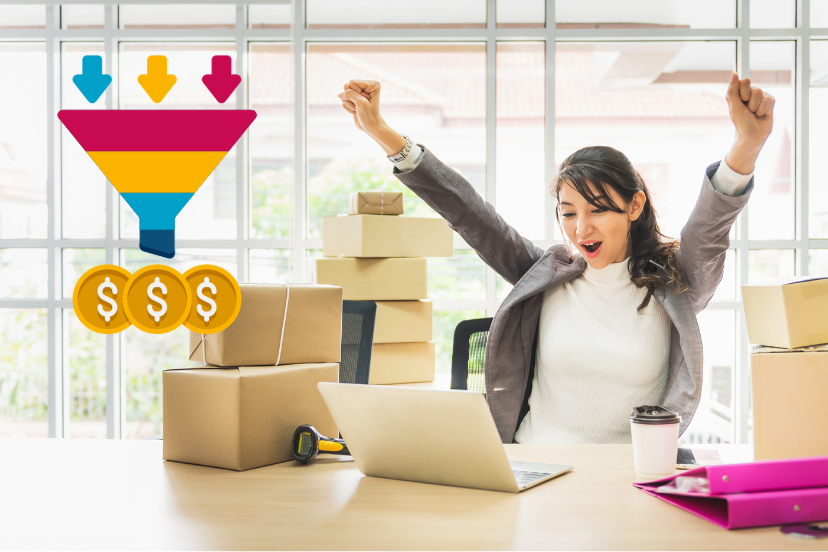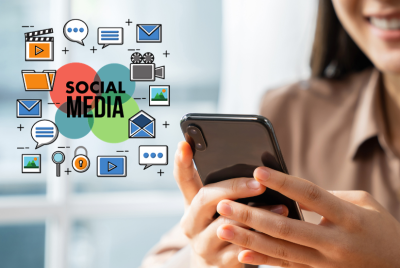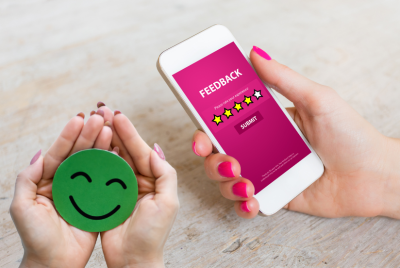Inbound Marketing Funnel: The Power of Customer Conversion
Are you ready to supercharge your business’s growth? The inbound marketing funnel is your secret weapon! In this comprehensive guide, we’ll delve deep into the world of inbound marketing funnels, uncovering their potential, and answering your burning questions. Get ready to transform your business strategies and watch your success soar.
What Is an Inbound Marketing Funnel?
So, what exactly is this inbound marketing funnel everyone’s talking about? Well, it’s a dynamic and strategic framework designed to attract, engage, and convert potential customers. Think of it as a journey – a path your prospects follow, guiding them from awareness to becoming loyal customers.
In simpler terms, it’s a roadmap that leads your audience right to your door. Now, let’s dissect the different layers of this funnel.
The Four Stages of Inbound Marketing Funnel
An inbound marketing funnel consists of four key stages:
- Attraction: At this stage, the goal is to grab your audience’s attention. It’s like casting a wide net in the digital ocean, using enticing content to lure potential customers. You want to be a magnet for those who need your products or services.
- Conversion: Once you’ve attracted prospects, the next step is converting them into leads. This involves collecting their contact information through forms, subscriptions, or other means. Essentially, you’re building a bridge for ongoing communication.
- Close: The close stage is where the magic happens. It’s all about nurturing those leads into paying customers. This requires tailored content, personalized interactions, and persuasive techniques to seal the deal.
- Delight: After making a sale, the journey doesn’t end. The delight stage focuses on turning customers into promoters. You want your customers to sing your praises, share their positive experiences, and keep coming back for more.
In a nutshell, the inbound marketing funnel serves as a strategic framework to guide your potential customers through these four stages, leading to increased brand loyalty and higher revenue. Now, let’s explore how to optimize each stage.
Optimizing the Inbound Marketing Funnel
Attracting the Right Audience
- Know Your Target Audience: Before you can attract your ideal customers, you must understand them. Conduct thorough market research to create buyer personas, ensuring your content resonates with your audience.
- Content is King: Engaging, informative, and relevant content is the lifeblood of the attraction stage. Craft blog posts, videos, infographics, and social media content that speaks directly to your audience’s pain points and interests.
- Search Engine Optimization (SEO): Use SEO strategies to ensure your content ranks well in search engine results. This will help your ideal customers discover your brand.
- Social Media Savvy: Leverage the power of social media platforms to promote your content and interact with your audience. Engage with comments, answer questions, and foster a sense of community.
Converting Visitors into Leads
- Compelling Call to Action (CTA): Use persuasive CTAs in your content to encourage visitors to take the next step, such as signing up for a newsletter or downloading a resource.
- Landing Pages: Create dedicated landing pages for specific offers or resources. Keep them clean, concise, and focused on the value visitors will receive.
- Forms That Work: Design user-friendly forms for data collection. Only ask for essential information to reduce friction in the conversion process.
- Lead Magnets: Offer valuable incentives like e-books, webinars, or exclusive content in exchange for contact information. Make sure the incentive aligns with your audience’s needs.
Closing the Deal
- Email Marketing: Utilize email campaigns to nurture leads and guide them toward a purchase decision. Segment your email list for more targeted messaging.
- Marketing Automation: Implement marketing automation tools to streamline your communication and deliver personalized content to leads at the right time.
- Case Studies and Testimonials: Showcase success stories and customer testimonials to build trust and credibility. Seeing others’ positive experiences can influence potential customers.
- Clear Path to Purchase: Ensure a straightforward, user-friendly path for completing a purchase. Eliminate any obstacles or confusion that could deter customers.
Delighting Your Customers
- Customer Support: Provide exceptional customer support to address inquiries and issues promptly. A satisfied customer is more likely to become a brand advocate.
- Surveys and Feedback: Collect feedback from your customers to continuously improve your products and services. Make them feel heard and valued.
- Exclusive Offers: Reward loyal customers with exclusive offers, discounts, or early access to new products. Show appreciation for their ongoing support.
- Engage on Social Media: Stay active on social media to interact with your customers. Respond to comments, share their posts, and maintain a personal connection.
Frequently Asked Questions (FAQs)
1. What’s the primary goal of an inbound marketing funnel?
The primary goal is to guide potential customers through the stages of awareness, conversion, close, and delight, ultimately turning them into loyal customers and brand advocates.
2. How long does it take to see results from an inbound marketing funnel?
The timeline can vary depending on factors like your industry, competition, and the effectiveness of your strategies. Generally, it takes a few months to start seeing significant results.
3. Do I need a large budget to implement an inbound marketing funnel?
Not necessarily. Inbound marketing can be cost-effective, especially when compared to traditional advertising methods. It’s more about crafting high-quality content and targeted strategies.
4. Can an inbound marketing funnel work for B2B businesses?
Absolutely! Inbound marketing funnels are versatile and can be tailored to suit the needs of both B2B and B2C businesses. The key is understanding your audience and providing value.
5. How do I measure the success of my inbound marketing funnel?
Key performance indicators (KPIs) such as website traffic, lead conversion rates, customer acquisition cost, and customer lifetime value can help assess the effectiveness of your funnel.
6. Is inbound marketing a one-time effort or an ongoing strategy?
Inbound marketing is an ongoing strategy. Building and maintaining relationships with customers is crucial for long-term success.
Conclusion
The inbound marketing funnel is more than just a concept; it’s a powerful tool for businesses to attract, engage, convert, and delight their customers. By strategically implementing each stage and optimizing your approach, you can unlock the full potential of this marketing framework. Remember, it’s a journey, not a destination, so stay committed to nurturing your audience and reaping the rewards. Don’t wait – start transforming your business today with the inbound marketing funnel!




